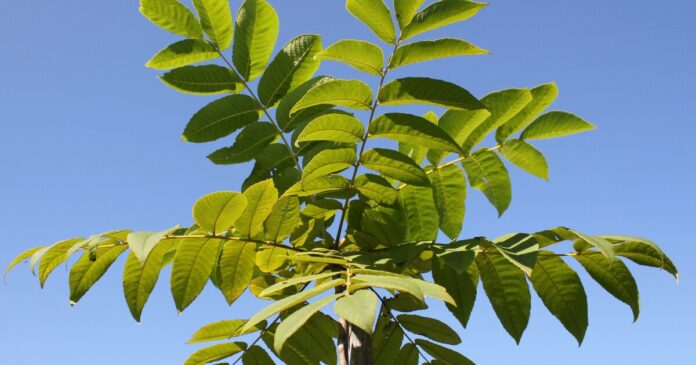Harsh, eco-unfriendly synthetic herbicides are definitely one of those things that you shouldn’t be using if you don’t have to. Japanese researchers are thus now developing a green alternative, derived from the leaves of a humble walnut tree.
For many years now, scientists have noticed that other large plants don’t grow near the Manchurian walnut tree (Juglans mandshurica). This phenomenon comes thanks to a li’l thing known as allelopathy, an offensive mechanism in which plants (or other organisms) release biochemicals that kill off other competing plants in the immediate vicinity.
Other types of walnut trees also practice allelopathy, and the “allelochemical” that they primarily utilize is called juglone. In the case of the Manchurian walnut tree, however – which is particularly good at allelopathy – its main allelochemical has remained unknown.
Scientists from Japan’s Kyushu University recently teamed up with colleagues in Juntendo University in Japan and Chulalongkorn University in Thailand, in order to find out.
In lab experiments simulating Manchurian walnut tree leaves falling on the ground and releasing their allelochemicals into the ground, the scientists isolated various chemicals from the leaves; added those chemicals to separate pieces of filter paper; added tobacco plant seeds to those papers; placed the papers on layers of wet soil; then observed the resulting tobacco seedlings as they grew under the influence of the different allelochemicals.
Associate Professor Seiichi Sakamoto, Kyushu University
Interestingly, it was found that the most growth-stunting of the compounds – a chemical known as 2Z-decaprenol – actually contained no juglone. In fact, this was the first time that the substance had been shown to act as an allelochemical.
“To develop 2Z-decaprenol into a viable bioherbicide, we must conduct extensive safety and toxicity testing for humans and animals, further clarify its precise mechanism, and overcome challenges in producing the compound on a large scale,” says Kyushu University’s Assoc. Prof. Seiichi Sakamoto, senior author of the study.
“Our ultimate goal is to continue searching for potent, biodegradable compounds from nature that can contribute to a more sustainable future for agriculture.”
A paper on the research was recently published in the Journal of Agricultural and Food Chemistry.
Source: Kyushu University


